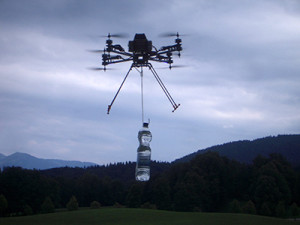Last month we discussed why digitizing your business to match your firm’s business design to its evolving key issues is almost an imperative in today’s business world. We said the twentieth century has produced powerful breakthroughs in the management of bits of information and this has culminated in what Adrian Slywotsky calls the “Choice Board”. Recall he is one of my favorite business thinkers, writers and consultants. I will paraphrase from him in this article and use my experience as well.

The Choice Board is an interactive on-line system that allows individual customers to design their own products and services by choosing from a menu of attributes, components, prices, and delivery and service options. The customer’s selections send signals to the supplier’s manufacturing system that set in motion the wheels of procurement, assembly and delivery. This allows you to get paid before manufacturing and delivery take place to optimize your cash flow.
In this article we want to dig deeper into the evolution of the Choice Board and where we are now. Amazon is once again taking this idea to new levels. Innovation seems to be never ending and your firm needs to adapt the aspects of this innovation wherever it can.
Let’s consider several more benefits of the Choice Board. It enables customer self-segmentation, which is fast, cost-efficient and far more precise than traditional manufacturer-imposed segmentation. It encourages upselling, cross-selling and repeat business. The Choice Board also provides real-time market research. It offers more timely and more accurate insights into actual customer demands that were previously unavailable. Finally, it reduces costs for manufacturers and their suppliers without sacrificing customer value. In fact customer value is enhanced.
The following are some example Choice Boards. Note that these were some of the first to be developed. Since then, many competitors have matched them and we will discuss this below.
1. Dell Computer – probably the first to have customers design their computers via a portal, order it and pay for it before their computer is manufactured and shipped direct to them.
2. Mattel’s My Design Barbie – lets fashion-doll fans custom-build a friend for Barbie. The doll’s image is displayed on a screen before it is ordered and manufactured.
3. De Beere’s Design Your Own Engagement Ring – lets customers design a diamond ring with any of 189 unique combinations of cut, band and side stones, then connects a local jeweler who can make it.
4. Cisco’s Marketplace – an on-line configurator that allows corporate customers to create the precise combination of data networking gear they need.
5. Charles Schwab’s Mutual Fund Screener – allows customers to design their own investment portfolios by selecting from Schwab funds and from funds managed by other financial companies. The Mutual Fund Screener is part of a larger system for its customers that includes other tools such as an asset allocator, a performance monitor, etc.
 What If Customers Do Not Know What They Want?
What If Customers Do Not Know What They Want?
You might be asking yourself this question as you have read the above. Choice Board models are evolving to address this issue.
For instance, Sony’s Choice Board asks a very simple set of questions about workstyle and usage, which takes thirty seconds to fill out. Then Sony suggests two or three laptop options that fit those needs. Acumins does the same thing for vitamin customers. Their online survey is two minutes and asks a series of lifestyle and health questions to help define best usage and combination of vitamins.
Sound Too Good to Be True?
As most business people know, everything in business has pros and cons. The Choice Board appears to have only pros and no cons. Who would not want to make this investment if there are even modest benefits for your firm to be gained? Choice Boards were developed to better target and provide value for customers by using customization. They allowed firms to know rather than guess at what each customer wants. They were also developed to avoid guessing what to produce beforehand and stockpile as finished goods inventory.
However, Choice Boards have now come to be the price of admission in many industries. If your industry can still benefit from this innovation, then the benefits seem to outweigh the costs and your firm should embrace this approach. But for those industries where the Choice Board has become a common denominator just to be in the game, where will the innovation and upgrades end? An answer to this dilemma is to think of how much data you are collecting on your customers and their buying habits and needs.
 Amazon is doing just this. We are now in the “big data analytics revolution. All of the data captured via the Choice Boards and other means is allowing prediction of demand to be laser like in focus and precision. Amazon is now using this to stockpile inventory that is very likely to sell in micro distribution centers for same day delivery. And pending FAA approval delivered in part with drones! Wow the wheel of innovation and competition just keeps turning.
Amazon is doing just this. We are now in the “big data analytics revolution. All of the data captured via the Choice Boards and other means is allowing prediction of demand to be laser like in focus and precision. Amazon is now using this to stockpile inventory that is very likely to sell in micro distribution centers for same day delivery. And pending FAA approval delivered in part with drones! Wow the wheel of innovation and competition just keeps turning.
This article is part of a series on what causes a firm’s value to increase
Bill Bigler is Director of MBA Programs and associate professor of strategy at LSU Shreveport. He spent twenty-five years in the strategy consulting industry before returning to academia full time at LSUS. He is involved with several global professional strategy organizations and can be reached at bbigler@lsus.edu or www.strategybest.com.
